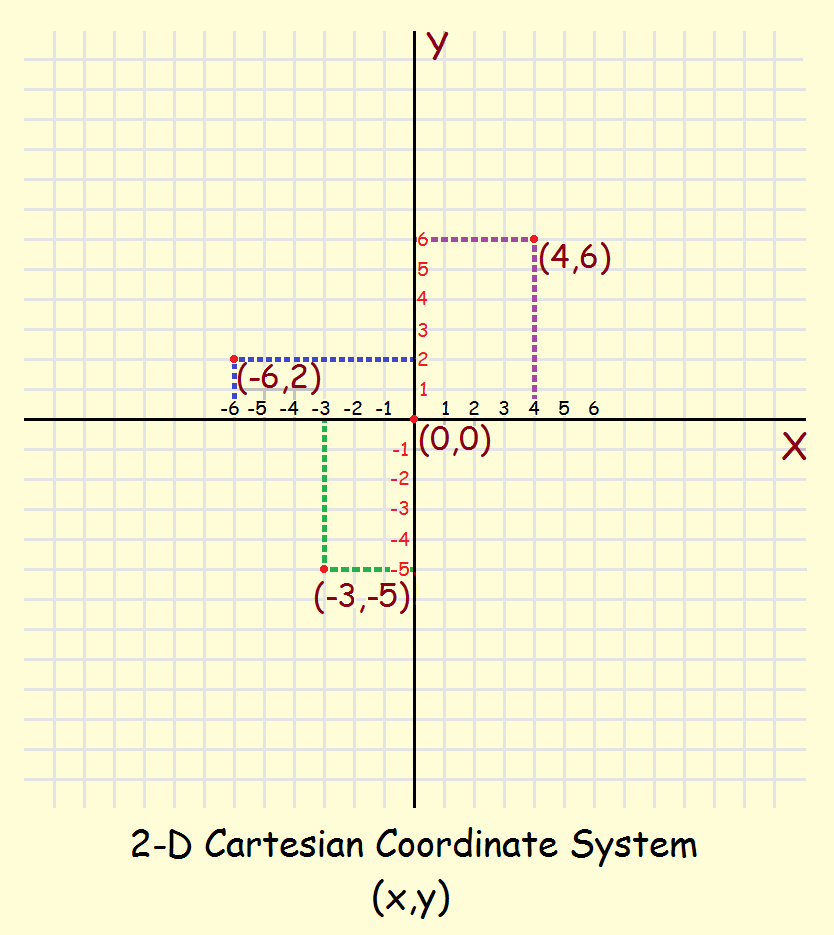
Along the horizontal x-axis, starting to the right of the (0, 0) point, write little numbers like a ruler has, 1, 2, 3, and so forth. To the left of that point, write, -1, -2, -3, and so on. For the y-axis, the 1, 2, 3, and such go upward, whereas the -1, -2, -3 and the rest go downwards.
Coordinate Axes: Equation of a Line – Examples
OK. We’ve prepared our coordinate system. Using it as a kind of mapping aid, we will draw the simplest of equations, that of a straight line. What does the general equation for a line look like? Before we discuss that, we’ll first consider three examples. First, the line,
x = 1
This equation means that no matter what value y has, x has the value one. Let’s draw some points to demonstrate what we mean. We’ll pick y = 0, y = 2, y = 5, y = -3. Then, we get
(1, 0)
(1, 2)
(1, 5)
(1, -3)
Locating these on our coordinate axes, we see that all we are doing is drawing a line parallel to the y-axis, but to the right one notch!
Correspondingly, if we next consider,
y = 1
we end up with a line one notch above the x-axis!
For our final example of a line. Let’s choose, y = 2x. Some example points are,
(0, 0)
(1, 2)
(3, 6)
(-2, -4)
(-2.5, 5)
This line goes from the bottom left-hand side of the coordinate axes up to the right-hand side. The line is just a bit more vertical than horizontal. This is because we included the number 2 in the equation. If we had written y = 1/2 x instead, the line would have been a little more horizontal than vertical. It is for good reason that the number in front of the x is called the “slope.” As in skiing, the number determines the slope of the line.
General Equation for a Line
OK. We’re ready to consider the general equation for a line. It is,
y = mx + b
We’ve already seen that m is a number representing the slope of the line. What, then, is b? It determines where the line crosses the y-axis. To demonstrate that, choose x = 0. Then if b = 2.7, for instance, y = 2.7. The line crosses the y-axis at (0, 2.7). This is the reason why b is called the “intercept.” It represents the point where the line intercepts the y-axis.
Note: You might also enjoy Introduction to Cylindrical Coordinates
← Back to Math-Logic-Design
← Home